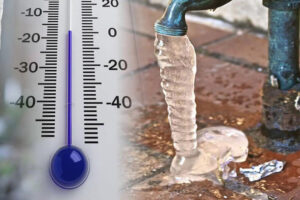Just like any other part of your home, a water heater requires regular maintenance. To maintain this feature of your home, you should schedule an inspection with your plumber. They will check different parts of the heater, including the pressure valve, anode rod, and temperature settings. The plumber will also check for sediment buildup.
Over time, your water heater can gather sediment at the bottom. This sediment can damage the water heater and prevent it from working properly. The following is some information on water heater sediment and why removal is important.
What Does Water Heater Sediment Consist Of?
Water heater sediment consists of minerals found naturally in both municipal and well water. Any sand or other particles that does not dissolve in the water collects in the bottom of the water heater tank.
Why Is Flushing a Water Heater Important?
A clean water heater that is free of sediment will last longer. A clean water heater tank also runs more optimally. Over time, the sediment will build up and prevent the water heater from running efficiently. Furthermore, sediment that is left in a water heater tank can result in discolored water coming through the faucets.
In addition to decreasing the efficiency of your water heater system and causing some impurities in your home’s water, the sediment can also cause the system to overheat. When the temperature gets too hot, the lining in the tank can become damaged.
The buildup inside the tank can also cause the heating elements to break. When the element has to fight the sediment, the heater has to work harder. This causes the components of the water heater to wear out more quickly. The water heater also uses more energy to heat the water, meaning higher utility bills.
Sediment in a water heater tank also causes clogs in the drain valves. When the valves clog, water can pool up on the floor. Once a valve clogs, your plumber will need to replace it.
How Frequently Should You Flush the Water Heater Tank?
The frequency of how often you should flush your water heater tank will depend on the quality of your water. Ideally, your plumber will likely recommend a flushing annually. However, if you have soft water, you may not need to have the tank flushed as often. In contrast, if you have hard water, you may need to flush it more than once a year due to the minerals in the water.
How Can You Prevent Sediment Buildup?
One of the best ways to keep your water heater from building up sediment is through regular flushing. You can also keep the tank clean by adding some vinegar to the tank to soak for a few hours. You can then flush it yourself to remove the vinegar and any sediment. This is an easy maintenance process you can do between professional cleanings.
If you have hard water, you may want to consider installing a water softener. The water softener helps remove the minerals found in hard water before it gets to the water tank. For homes with hard water, this is one of the best ways to prevent sediment from building up inside the tank.
Once you understand how sediment builds up in your hot water tank, you can take the steps necessary to prevent and remove it. A professional cleaning is necessary on a regular basis, but recognizing the signs of sediment buildup will help the longevity and efficiency of your water heater.
For help with your water heater tank maintenance or any other plumbing issues, please call A -1 Affordable Plumbing Inc. We are happy to work with you on all your home’s plumbing needs.









